Peter Lobner
In my 24 August 2016 post, “Exploring Microgravity Worlds,” I described the European Space Agency’s (ESA’s) Rosetta mission to comet 67P and the Philae lander, which was intended to make a soft landing on 67P and attach itself to the surface. However, the securing devices (a pair of harpoons and screws on each leg) failed to work upon touching the surface the first time. In the microgravity environment of 67P, Philae rebounded and eventually came to rest adjacent to a rocky outcropping seen in a post-landing photo.
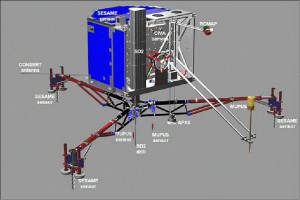 Main components of the Philae lander. Source: Philae team
Main components of the Philae lander. Source: Philae team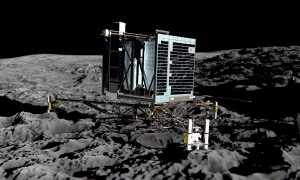 Philae as it was intended to look after landing. Source: MEDIALAB/AFP/Getty Images
Philae as it was intended to look after landing. Source: MEDIALAB/AFP/Getty Images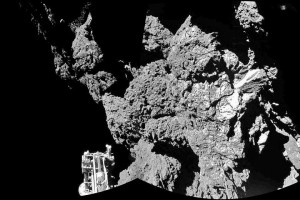 View from Philae’s actual landing site. Source: ESA
View from Philae’s actual landing site. Source: ESA
On 2 September 2016, the ESA team managing the Rosetta mission found Philae in photographs taken from the Rosetta spacecraft at an altitude of about 2.7 km (1.7 miles) above the surface of 67P. The photos show that Philae, which is about the size of a washing machine, is lying on its side, wedged among large rocks. Knowing Philae’s actual orientation and environment is expected to help ESA reevaluate the data Philae transmitted from its resting place.
Philae is the “poster child” for the hazards of landing on microgravity worlds.
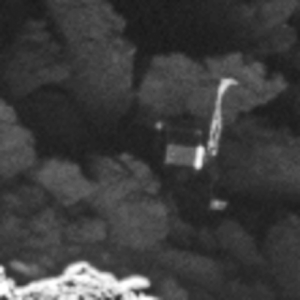 Philae’s final resting place on comet 67P. Source: ESA
Philae’s final resting place on comet 67P. Source: ESA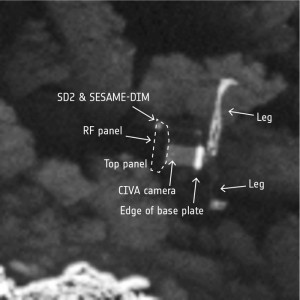 Annotated Philae photo. Source: ESA
Annotated Philae photo. Source: ESA
Meanwhile, Rosetta is being maneuvered into ever-closer orbits around 67P, with the goal be taking measurements of the comet’s “atmosphere” very close to the surface. The Rosetta mission is expected to come to an end in September 2016 with the spacecraft colliding with 67P.